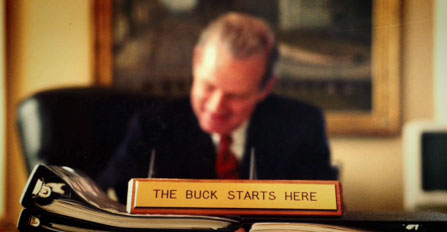No man is an island. This quote from the English poet John Donne succinctly describes the political role of the president of the United States. As leader of a country as large and diverse as the United States, the U.S. president is often faced with competing goals and policies, both foreign and domestic. For a president to implement policies and achieve goals, the president needs to have advisors who are savvy political tacticians, coalition builders, and masters of negotiation. James A. Baker served in these roles to several American presidents. James Baker applied his skills of negotiation and compromise to achieve presidential goals, both internationally and domestically. Because of his expertise, his opinions are still sought out today by both the press and political leaders. The educational activities that accompany the James A. Baker website and documentary give students a “behind the scenes” look at politics in America and what it takes to “make Washington work.”
As secretary of the treasury, Baker mastered the artful balance of ‘give and take.’


